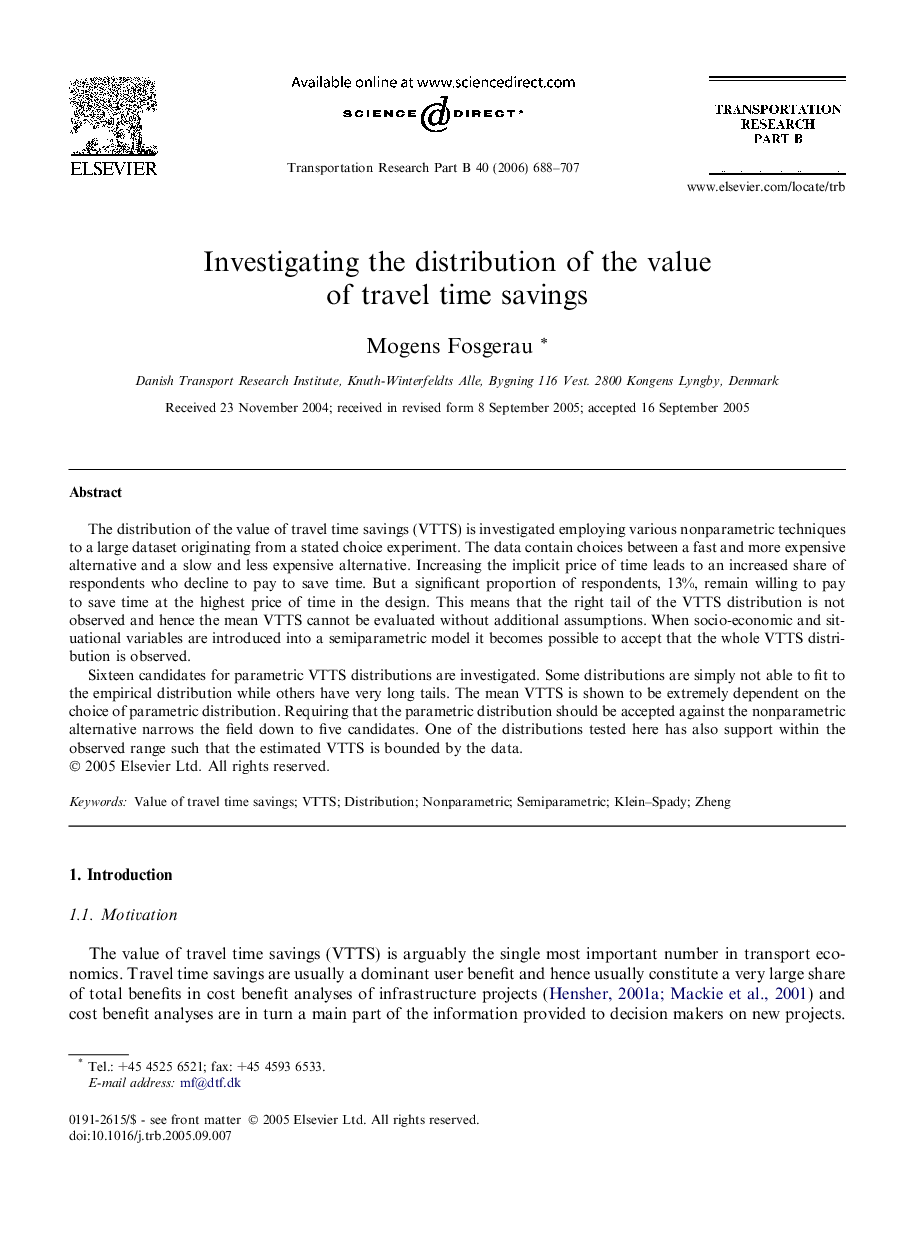| Article ID | Journal | Published Year | Pages | File Type |
|---|---|---|---|---|
| 1133043 | Transportation Research Part B: Methodological | 2006 | 20 Pages |
The distribution of the value of travel time savings (VTTS) is investigated employing various nonparametric techniques to a large dataset originating from a stated choice experiment. The data contain choices between a fast and more expensive alternative and a slow and less expensive alternative. Increasing the implicit price of time leads to an increased share of respondents who decline to pay to save time. But a significant proportion of respondents, 13%, remain willing to pay to save time at the highest price of time in the design. This means that the right tail of the VTTS distribution is not observed and hence the mean VTTS cannot be evaluated without additional assumptions. When socio-economic and situational variables are introduced into a semiparametric model it becomes possible to accept that the whole VTTS distribution is observed.Sixteen candidates for parametric VTTS distributions are investigated. Some distributions are simply not able to fit to the empirical distribution while others have very long tails. The mean VTTS is shown to be extremely dependent on the choice of parametric distribution. Requiring that the parametric distribution should be accepted against the nonparametric alternative narrows the field down to five candidates. One of the distributions tested here has also support within the observed range such that the estimated VTTS is bounded by the data.
